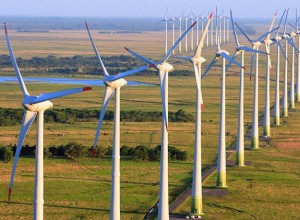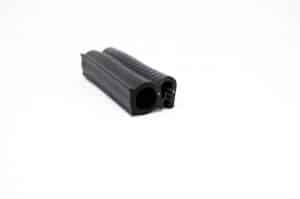
Clyde Sharpe
President of International Sales
What do Brazil, the Great Plains, the North Sea, and northern China have in common? They’re parts of the world where the winds blow strong and the potential for wind energy is incredible. Once criticized for its complexity and cost, wind power projects now generate nearly 300 gigawatts (GW) of electricity worldwide. That’s nearly triple the electricity-producing potential of Brazil alone.
Water, Wind, and Renewable Energy
What does wind power mean for Brazil, a land of plentiful rivers and dams – and home to the world’s seventh largest economy? Although hydropower will remain Brazil’s main source of electricity, experts remember the drought-driven energy crisis of 2001. Today, Brazil’s High Wilderness Wind Complex – the largest collection of wind turbines in Latin America – is nearing completion.
“Wind is the perfect complement for the hydro base that we have in Brazil,” explains Mathias Becker, president of Renova Energia, the São Paulo wind energy company that’s building High Wilderness in Brazil’s semi-arid northeast. “When it rains, we don’t have wind. When the wind blows, there is no rain.” For Becker, whose initial investment of $5000 is now a $1.5-billion business, the future is bright indeed.
Brazil’s energy demands are growing so fast that energy production must increase by 50% over the next decade just to keep pace. Russia, India, and China are also expanding their power generation capabilities to avoid an energy crunch. Today, more than 25% of the world’s wind power capacity is in China, an economic powerhouse that produced over 75,000 megawatts (MW) of wind energy last year.
Electricity and Economic Growth
Will wind farms help Brazil to avoid blackouts like the one much of the nation experienced in 2001? Will windmills provide 10% of the nation’s generating capacity by 2021, an ambitious goal but one that would provide almost enough power for São Paulo, South America’s largest city? For other wind-driven parts of the world, can wind turbines support not just consumer demand but economic growth?
In the United States, wind power is now nearly 50% of all new electricity-generating capacity. Here in Canada, where Elasto Proxy is headquartered, the Canadian Wind Energy Association (CanWEA) predicts that wind farms will add another 1,500 megawatts (MW) to the grid by year’s end. Europe leads the way in offshore wind farms, with the London Array producing enough electricity for a half-million homes.
If your business supports green power projects like wind farms, now is the time to strengthen your supply chain to service existing installations and meet growing demand. Whether you make solar panels, hydroelectric turbines, windmills, or wind turbines, your company needs to know that it can count on high-quality, on-time deliveries of rubber and plastic products such as sealing and insulation.
Wind Energy Technology Goes On-Line
Recently, Elasto Proxy connected with wind power partners at IHS GlobalSpec’s Wind Energy Technology event. Visitors to our virtual tradeshow booth learned how we supply high-quality rubber profiles for windmill blades and nacelles. With over 20 years’ wind energy experience, Elasto Proxy also designs and fabricates door seals, hatch and lightning gaskets, acoustic insulation panels, and anti-vibration mats.
This year’s Wind Energy Technology event is over, but you can still connect with Elasto Proxy on-line. Contact our solutions providers via our website, or visit us on LinkedIn, Twitter, Facebook, YouTube, and now Google+. Ask about our sales office in China, and what our trade missions to Brazil could mean for potential partners like you. Subscribe to our newsletters, too.
The world’s wind power market is growing, and Elasto Proxy will continue to bring you insights about how wind energy can strengthen your company’s bottom line. Keep in touch!











